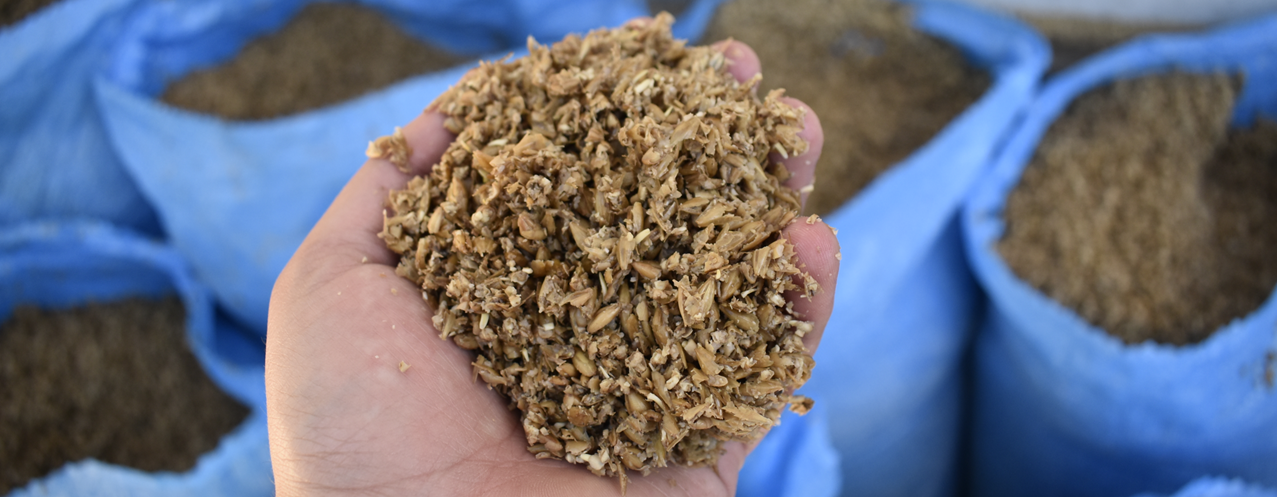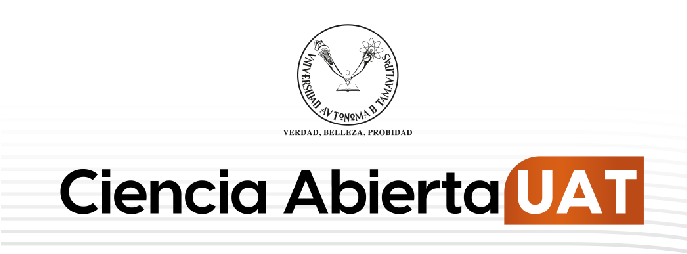Efecto de la inclusión del bagazo cervecero sobre el rendimiento productivo y parámetros económicos de terneras en la Patagonia Chilena
DOI:
https://doi.org/10.29059/cvpa.v2i2.28Palabras clave:
terneras, bagazo cervecero húmedo, economía circular, Patagonia chilenaResumen
Los sistemas ganaderos, en la Patagonia chilena, basan su producción en sistemas pastoriles en donde las praderas no presentan crecimiento durante el invierno. Una forma de suplir las deficiencias es el uso de forrajes conservados, aunque generalmente no cumplen con los requerimientos nutricionales de los animales. Entonces los ganaderos utilizan suplementos que mejoran la calidad nutricional de la dieta y esto eleva el costo de producción. El objetivo fue evaluar el efecto de la inclusión de bagazo cervecero húmedo (BCH) sobre el rendimiento productivo y los parámetros económicos de terneras durante el invierno. Se emplearon dos tipos de alimentación (HB: Heno de alfalfa + BCH; H: solo Heno de alfalfa) durante 78 días con 27 terneras Angus x Hereford. La inclusión de BCH disminuyó el consumo de EM, pero se mantuvieron los valores de PC y FDN, que se tradujo en ganancias diarias de peso superiores (0.2 kg/d) con respecto a H. Además, el costo diario de la dieta disminuyó en un 16%. La inclusión de BCH en un 20% de la dieta se convierte en una alternativa para la alimentación de terneras de carne en la Patagonia. concluyendo que al incluir un 20% de BCH se reduce el costo de la alimentación y se obtienen mejores
rendimientos.
Citas
Acechi (2024). Asociación de Productores de Cerveza de Chile A.G. https://acechi.cl/
Cañas, R. (1995). Alimentación y nutrición animal. Colección en Agricultura. Pontificia Universidad Católica de Chile, Facultad de Agronomía.
Daza, C. J., Reyes, S. C., González, M. V., Moldenhauer, R., & Urrejola, J. (2022). Residuos de cervecería: Una oportunidad de uso en alimentación ganadera. Ficha Técnica INIA Tamel Aike 193. Instituto de Investigaciones Agropecuarias. https://biblioteca.inia.cl/items/22bb7147-decb-46e8-9892-6591f540f48b
Daza, J., Monsalve, R., M., Naguil, T. A., & Monsalve, E. (2021). GTT Zona Húmeda de Aysén- Estudio de caso: Características físicas y nutricionales de forrajes conservados. Ficha Técnica INIA Tamel Aike 131. Instituto de Investigaciones Agropecuarias. https://hdl.handle.net/20.500.14001/67573
Elizalde, F., Hepp, C., Reyes, C., Tapia, M., Lira, R., Morales, R., Sales, F., Catrileo, A., & Silva, M. (2020). Growth, carcass and meat characteristics of grass-fed lambs weaned from extensive rangeland and grazed on permanent pastures or alfalfa. Animals, 11(1), 52. https://doi.org/10.3390/ani11010052 DOI: https://doi.org/10.3390/ani11010052
Faccenda, A., Zambom, M. A., Avila, A. S., Fernandes, T., Stum, M. M., Garcias, J., Tinini, R. C. R., & Dias, A. L. G. (2018). Dried brewers’ grain as a replacement for soybean meal on nutrient digestibility and rumen parameters of cattle. South African Journal of Animal Science, 48(6), 1093-1098. https://doi.org/10.4314/sajas.v48i6.12 DOI: https://doi.org/10.4314/sajas.v48i6.12
Galle, F. J. (2019). Evaluación económica de una planta para elaboración de cerveza artesanal en la comuna de Los Lagos, Región de Los Ríos [Memoria para optar al título de Ingeniero Agrónomo, Universidad Austral de Chile]. Facultad de Ciencias Agrarias, Escuela de Agronomía.
Getu, K., Getachew, A., Berhan, T., & Getnet, A. (2020). Supplementary value of ensiled brewers spent grain used as replacement to cotton seed cake in the concentrate diet of lactating crossbred dairy cows. Tropical Animal Health and Production, 52(6), 3675-3683. https://doi.org/10.1007/s11250-020-02404-5 DOI: https://doi.org/10.1007/s11250-020-02404-5
Hatungimana, E., Stahl, T., & Erickson, P. (2020). Growth performance and apparent total tract nutrient digestibility of limit-fed diets containing wet brewer’s grains to Holstein heifers. Translational Animal Science, 4(3), txaa079. https://doi.org/10.1093/tas/txaa079 DOI: https://doi.org/10.1093/tas/txaa079
Hepp, C. (Ed.) (2019). Sistemas de producción de bovino de carne en la Patagonia Húmeda. Boletín INIA 403. Instituto de Investigaciones Agropecuarias. https://hdl.handle.net/20.500.14001/6797
Klopfenstein, T. (2001). Distillers grains for beef cattle. In Proceedings National Corn Growers Association Ethanol Co-ProductsWorkshop. DDGS: Issues to Opportunities, 1-9.
Lira, R., MacAdam, J., Sales, F., & Villalba, J. (2020). Supplemental levels of protein and energy influence ingestion of Romerillo (Chiliotrichum diffusum) by sheep in southern Patagonia. Small Ruminant Research, 191, 106160. https://doi.org/10.1016/j.smallrumres.2020.106160 DOI: https://doi.org/10.1016/j.smallrumres.2020.106160
López-Linares, J. C., Lucas, S., García-Cubero, M. T., Jímenez, J. J., & Coca, M. (2020). A biorefinery based on brewer‘s spent grains: Arabinoxylans recovery by microwave assisted pretreatment integrated with butanol production. Industrial Crops and Products, 158, 113044. https://doi.org/10.1016/j.indcrop.2020.113044 DOI: https://doi.org/10.1016/j.indcrop.2020.113044
Lynn, B., Wohlt, J., Schoknecht, P., & Westendorf, M. (2009). Variation in nutrient content of microbrewers grains and effect on performance and carcass composition when fed wet to growing finishing swine. The Professional Animal Scientist, 25(4), 426-433. https://doi.org/10.15232/S1080-7446(15)30734-8 DOI: https://doi.org/10.15232/S1080-7446(15)30734-8
Manterola, H., Cerda, D., & Mira, J. (1999). Los residuos agroindustriales y su uso en la alimentación de rumiantes. En H. Manterola, D. Cerda & J. Mira (Eds.), Los residuos agrícolas y su uso en la alimentación de rumiantes (pp. 121-125). Fundación para la Innovación Agraria, Chile.
Moriel, P., Artioli, L., Poore, M., & Fellner, V. (2015). Effects of replacing ground corn with wet brewers grains on growth performance and concentrations of liver trace minerals and plasma fatty acids of preconditioning beef heifers fed medium-quality fescue hay. The Professional Animal Scientist, 31(5), 425-433. https://doi.org/10.15232/pas.2015-01421 DOI: https://doi.org/10.15232/pas.2015-01421
Moriel, P., Piccolo, M., Artioli, L., Poore, M., Marques, R., & Cooke, R. (2016). Decreasing the frequency and rate of wet brewers grains supplementation did not impact growth but reduced humoral immune response of preconditioning beef heifers. Journal of Animal Science, 94(7), 3030-3041. doi:10.2527/jas2015-0250 DOI: https://doi.org/10.2527/jas.2015-0250
Navarro, M. (2009). Condición corporal en la ganadería de cría. Cuadernillo Técnico N°8, Instituto de Promoción de la Carne Vacuna Argentina, IPCVA.
Parmenter, R., Rickard, J., & James, D. (2018). Case Study: Effects of inclusion of wet brewers grains on the growth performance, carcass characteristics, and meat quality of finishing cattle. The Professional Animal Scientist, 34(5), 505-512. https://doi.org/10.15232/pas.2018-01725 DOI: https://doi.org/10.15232/pas.2018-01725
Rachwal, K., Wasko, A., Gustaw, K., & Polak-Berecka, M. (2020). Utilization of brewery wastes in food industry. PeerJ, 8, e9427. https://doi.org/10.7717/peerj.9427 DOI: https://doi.org/10.7717/peerj.9427
Radzik-Rant, A., Rant, W., Niz˙nikowski, R., Swiatek, M., Szymaska, Z., Slezak, M., & Niemiec, T. (2018). The effect of the addition of wet brewers grain to the diet of lambs on body weight gain, slaughter value and meat quality. Archives Animal Breeding, 61(2), 245-251. https://doi.org/10.5194/aab-61-245-2018 DOI: https://doi.org/10.5194/aab-61-245-2018
Robertson, J., I'Anson, K., Treimo, J., Faulds, C., Brocklehurst, T., Eijsink, V., & Waldron, K. (2010). Profiling brewers’ spent grain for composition and microbial ecology at the site of production. Food Science and Technology, 43(6), 890-896. https://doi.org/10.1016/j.lwt.2010.01.019 DOI: https://doi.org/10.1016/j.lwt.2010.01.019
Sales, F., Bravo-Lamas, L., Realini, C., Lira, R., Aldai, N., & Morales, R. (2020). Grain supplementation of calves as an alternative beef production system to pasture-finished steers in Chilean Patagonia: meat quality and fatty acid composition. Translational Animal Science, 4(1), 352-362. https://doi.org/10.1093/tas/txz188 DOI: https://doi.org/10.1093/tas/txz188
Segers, J., Stelzleni, A., Pringle, T., Froetschel, M., Ross, C., & Stewart, Jr., R. (2013). Use of corn gluten feed and dried distillers grains plus solubles as a replacement for soybean meal and corn for supplementation in a corn silage-based stocker system. Journal of Animal Science, 91(2), 950-956. https://doi.org/10.2527/jas.2011-4392 DOI: https://doi.org/10.2527/jas.2011-4392
Senthilkumar, S., Viswanathan, T., Mercy, A., Gangadevi, P., Ally, K., & Shyama, K. (2010). Chemical composition of brewery waste. Tamil Nadu Journal of Veterinary and Animal Sciences, 6(1), 49-51.
Singh, P., Ghosh, M., Mahesh, M., & Chatterjee, A. (2022). Zoo-technical responses of growing cattle fed sun-dried brewers’ spent grain at 20% of dietary inclusion. Bulletin of the National Research Centre, 46, 126. https://doi.org/10.1186/s42269-022-00806-z DOI: https://doi.org/10.1186/s42269-022-00806-z
Tilley, J. M., & Terry, R. A. (1963). A two-stage technique for the in vitro digestion of forage crops. Grass and Forage Science, 18(2), 104-111. https://doi.org/10.1111/j.1365-2494.1963.tb00335.x DOI: https://doi.org/10.1111/j.1365-2494.1963.tb00335.x
Van Soest, P., Robertson, J., & Lewis, B. (1991). Methods for dietary fiber, neutral detergent fiber, and nonstarch polysaccharides in relation to animal nutrition. Journal of Dairy Science, 74(10), 3583-3597. https://doi.org/10.3168/jds.S0022-0302(91)78551-2 DOI: https://doi.org/10.3168/jds.S0022-0302(91)78551-2

Publicado
Cómo citar
Número
Sección
Licencia
Derechos de autor 2025 Ciencias Veterinarias y Producción Animal

Esta obra está bajo una licencia internacional Creative Commons Atribución-NoComercial-CompartirIgual 4.0.
Aceptado 2025-01-22
Publicado 2025-01-31






